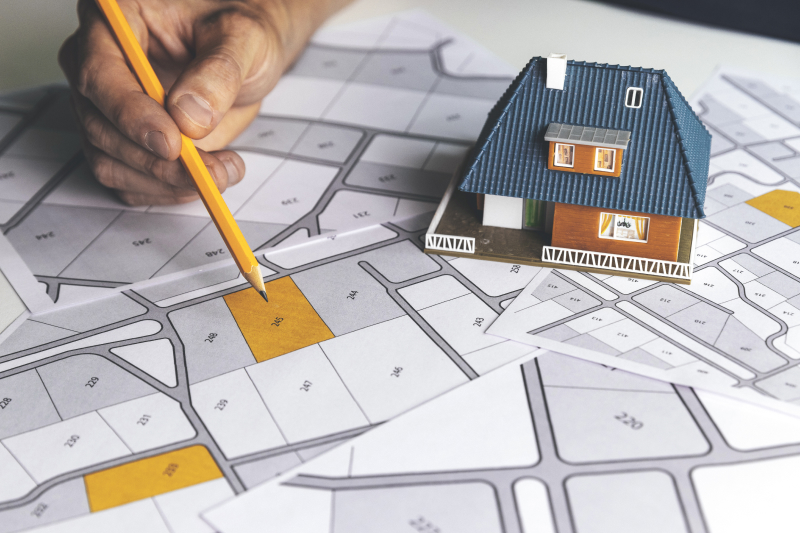DEVELOPMENT OF PLOT FOR GROUP HOUSING SCHEME THROUGH DEVELOPER
[JOINT VENTURE];
AUTHOR: Er. ALHAD DESHPANDE
INTRODUCTION;
As we know builders and developers are playing key role in development of any city. Their projects/townships add value to any city. As land cost is too high for common man, he just can afford a flat of one, two, three or more bed rooms according to his budget. Builders and developers normally purchase land parcels almost 4-5 years before they launch their group housing scheme in order to match with the cost and escalation factors in market.
But many times there are people who are holding ownership of land/plots as investors, but they are not developers, neither have experience of completing a project successfully. So such people offer their land/plots to developers for development. Such contract is termed as joint venture.
Features of joint venture;
1] Developer need not have to invest in purchasing land for project as same is already owned by land owner, neither land owner has to invest for various construction related permissions and plot development costs for such project.
2] Both entered into a contract agreement which is known as “development agreement”, which defines shares of both parties i.e. land owner and developer. The sharing ratio is governed by construction rules, guidelines, property laws, RERA act, transferability, and marketability etc.
3] In development agreement duties of land owner and developers are specified along with probable completion period of the project along with certain terms and conditions, penalty clauses etc.
4] Without investing in construction and development, land owner gets profitable deal as compared to outright sale of such land/plot, he can either keep the apartment units in his share for himself and family or can sale it in open market at good price.
Before finalizing the deal, developer puts his all calculations as how much maximum legal construction is possible in terms of commercial and residential units, accordingly he quotes his offer. The land owner also study the same through his legal and technical advisors and quotes his offer.
After negotiations, both parties come to certain conclusion of sharing the profit ratio and then both enter into development agreement.

Nowadays basic FSI is increased in municipal council and corporation areas, also benefits of paid premium , ancillary FSI, TDR are there, after adding all such benefits FSI can be stretched to 2 or even more than that in non-Gaothan areas.
To illustrate the concept of JOINT VENTURE, let me put an example, which will simplify and clear the concept..
Suppose plot area of 5000 sqft. IS SUPPOSED TO BE DEVELOPED, the area statement for plot and construction will appear like this in sanctioned building plan as approved by local competent authority?
Plot area = 5000 sqft.
FSI allowed = 1.1
So, built up area allowed = 5000 x 1.1 = 5500 sqft. [A]
30 % paid premium = 0.3 x 5000 = 1500 sqft. [B]
Ancillary FSI UPTO 60 % ALLOWED= 1100 SQFT. TAKEN ONLY[C]
ADD FOR TDR = 40 % OF 5000 SQFT. = 2000 SQFT. [D]
TOTAL B/UP AREA [A+B+C+D] BECOMES = 10100 SQFT.
The ancillary FSI denotes FSI used for common areas such as lift, lobbies, staircases, flower beds, etc.
SO ON 5000 SQFT. PLOT, 10100 SQFT. Construction can be raised within the rules regulations of udpcr!
Now if land cost in said area is say = Rs. 5000/sqft. , so land value = Rs. 5000/sqft. [x] 5000
= Rs. 2, 50, 00,000/- , [land owner can get this amount on outright sale if he doesn’t want to develop the same]
Land owners contribution becomes = Rs. 2, 50, 00,000/-
Developer’s expenses;
Construction cost = Rs.2500/- [x] 10100 sqft. = Rs.2,52,50,000/- [A]
30 % paid premium, TDR, ancilary FSI COST = SAY, Rs.70,00,000/-[B]
[This amount changes area to area and one has to acount the same as per the property and its location]
TOTAL DEVELOPER’S Expenses = A+B= Rs.3, 22, 50,000/-
Total project cost of both parties = Rs.2, 50, 00,000/-[+] Rs.3, 22, 50,000/- = Rs.5,72,50,000/-
So, sharing ratio becomes;
For land owner = Rs.2, 50, 00,000/- divided by Rs.5, 72, 50,000/-= 0.43
For land owner = Rs.3, 22, 50,000/- divided by Rs.5, 72, 50,000/- = 0.57
After negotiations same sharing ratio can be 40:60, which means land owner will share 40 % of constructed units = 0.4 [x] 10100 sqft. = 4040 sqft. , if flats selling rate in said area suppose is
Rs.8500/sqft., land owner can receive amount of Rs.8500/sqft. [x] 4040 sqft. =Rs. 3, 43, 40,000/-
Which is certainly 35-40 % more than outright sale due to risk factors involved!
Now it is up to the land owner to take appropriate decision, depending on his situation and need. Normally land owner sale units in his share with the help of said developer and builder as he is not acquainted with market sale and fluctuations, neither he has any selling or marketing network!
ABOUT THE AUTHOR

Er. ALHAD DESHPANDE
B.E. [CIVIL], M.I.E., F.I.V., M.O.V.
IBBI REGISTERED VALUER



